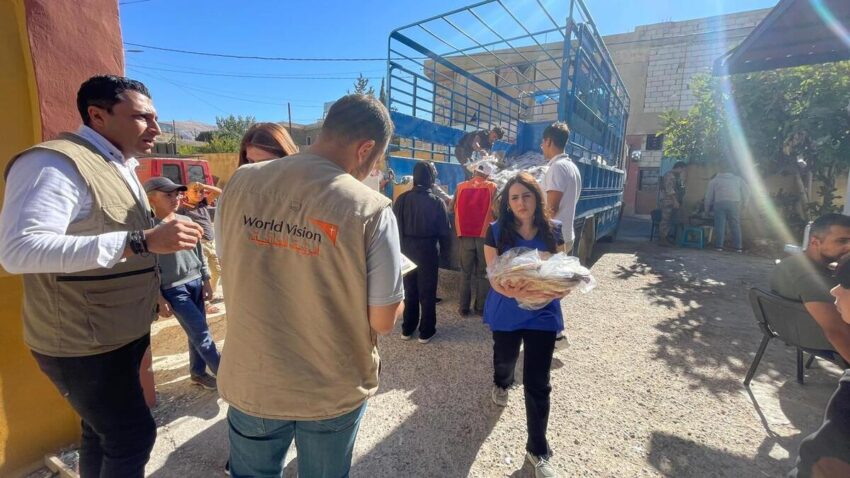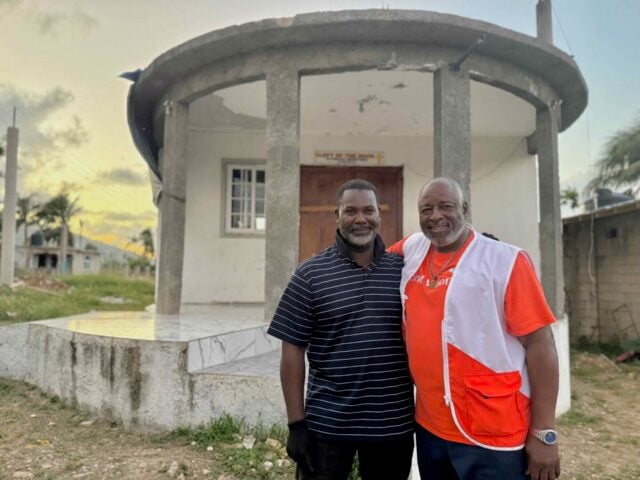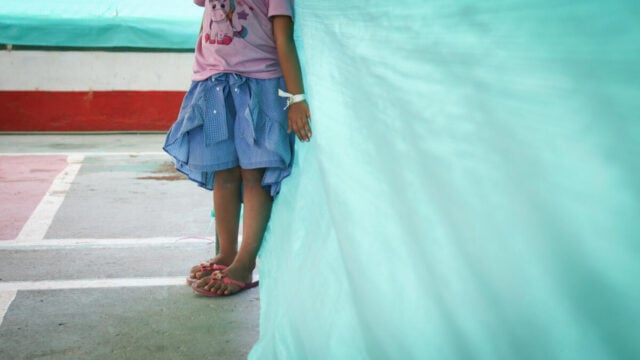For children in conflict-affected areas of the Middle East, the sounds of armed violence have become a tragic regular reality. Schools that once provided hope and stability are now closed, with classrooms turned into makeshift shelters. Thousands of displaced families face uncertainty every day.
Middle East crisis: Facts, FAQs, and how to help
Explore facts, and frequently asked questions about the crisis in the Middle East, and learn how you can help impacted communities.
- Fast facts: Middle East crisis
- How is the Middle East crisis affecting children?
- What is World Vision doing to help impacted families in the Middle East?
- How can I help the children and families affected by the crisis in the Middle East?
Fast facts: Middle East crisis
- In Lebanon:
- West Bank:
- About 14,000 children are displaced.
- Many schools in the West Bank are open only three days a week.
- Health clinics are open just one day a week, with limited access to healthcare personnel and essential supplies.
- 3 million children are at risk as the crisis worsens.
How is the Middle East crisis affecting children?
Every child deserves to feel safe, to learn, and to grow up healthy. Right now, violence, poverty, and failing services are stealing those basic rights from far too many children. In some regions of Lebanon, more than half of children under 2 face severe food poverty, while nationwide nearly a third of children under 18 had just one meal or none the day before.
In the West Bank, frequent service interruptions mean that children often go without regular schooling or healthcare. Many experience stress, fear, and uncertainty about the future. When the basic structures that protect childhood break down, children lose the stability and opportunity that every young person deserves.
Children in Lebanon and the West Bank are growing up amid conditions that threaten their health, learning, and security. Families are struggling to find enough food, and many can no longer afford diverse or nutritious meals. In some regions of Lebanon, more than half of children under age 2 are affected by severe food poverty. Across the country, more than a third of children have one or fewer meals a day.
Education has also been disrupted. In the West Bank, many schools operate only three days a week, leaving children without consistent learning or the structure and stability that classrooms provide. Healthcare facilities are open one day a week, leaving communities vulnerable to illnesses with limited access to healthcare professionals and essential supplies.
The loss of essential needs such as food, safety, and stability places significant psychological strain on children, compounding the effects of ongoing conflict.
“The conflict is impacting children caught in this cycle of violence, hunger, and displacement. Behind each statistic is a story — stories of children and the families who want to keep them safe — enduring unimaginable fear, trauma, and loss,” says Margaret Schuler, senior vice president of International Programs for World Vision.
Such experiences can shape how children grow, learn, and dream long after the crisis ends.
What is World Vision doing to help impacted families in the Middle East?
World Vision is working in both Lebanon and the West Bank to meet urgent needs while helping families recover and rebuild stronger communities for the future.
In Lebanon, World Vision reached over 589,000 people, including more than 217,000 children, through programs focused on education, protection, water, sanitation, and hygiene, food security, and cash assistance.
- 10.2 million meals delivered to families in need
- 24,700 blankets distributed
- 61,000 hygiene kits distributed
- 11,600 children received psychosocial support
- 934 shelters rehabilitated, including schools, homes, and health care centers, to help ensure dignified living conditions and access to essential services.
In the West Bank, World Vision has reached more than 1 million people, including 430,000 children. The response includes five key components: emergency aid for communities affected by violence and displacement, mental health and psychosocial support, and protection initiatives that strengthen first responder capacity and improve access to health services and education.
- 10,700 people received cash or voucher assistance, allowing families to meet their most urgent needs
- 35,000 children have access to safe play and recreation areas where they can connect and play with others
- 28,000 children are participating in social and emotional learning activities that help build confidence and coping skills
How can I help the children and families affected by the crisis in the Middle East?
Now more than ever, children in Lebanon and across the Middle East need our help. Every child deserves to feel safe, to learn, and to grow up healthy. Right now, violence, poverty, and failing services are stealing those basic rights from far too many children. Our staff and those we serve deeply appreciate the continued prayers of our donors and partners. Gifts to support these and other urgent relief efforts can be made to our Disaster Relief Fund.
Amy Van Drunen of World Vision in the United States contributed to this article.




